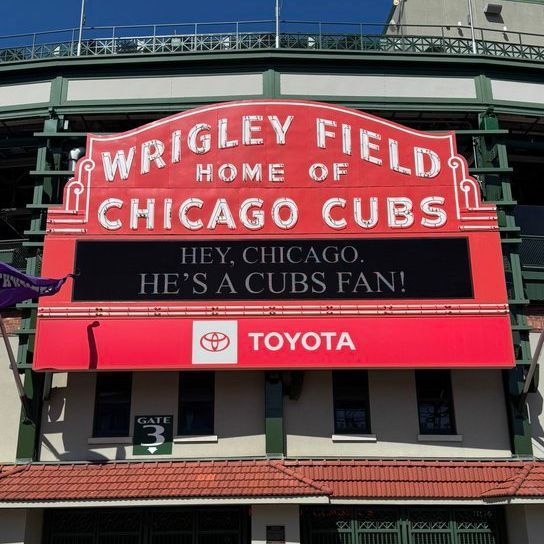CIUDAD JUÁREZ, Mexico – In a world quickly turning against migrants, Pope Francis came here, to this dangerous crossing point, to bless them. Migrants are our "brothers and sisters," he said in a Mass at the U.S.
-Mexico border in 2016, and those who help them are "prophets of mercy." The Catholic Church's first Latin American pope presided during a period of historic global migration , during which he has made compassion for migrants and marginalized people the foundation of his papacy, even amid the rise of leaders in rich countries hellbent on shutting out refugees . Francis died April 21 at the age of 88.

Worldwide, there were 51 million forcibly displaced people in 2013 when Francis took the helm of the Catholic Church, according to the United Nations. The number of displaced people swelled to more than 120 million last year. His historic visit to Ciudad Juárez nearly a decade ago came during the heat of a U.
S. presidential election in which then-candidate Donald Trump was promising to build a "big, beautiful wall" at the border. Francis said at the time that a person who thinks only of building walls and not bridges "is not Christian.
" Ever since, he has challenged Trump's views – never by name but in public letters and sermons that criticize "mass deportation" and anti-immigrant policies in the U.S. He has done so even at the risk of angering U.
S. Catholics, a majority of whom voted for Trump. Days before he was hospitalized in February, Francis challenged an idea, promoted by Vice President JD Vance , that Americans should take care of their own first.
"Christian love is not a concentric expansion of interests that little by little extend to other persons and groups," Francis wrote in an open letter to U.S. bishops.
"God will richly reward all that you do for the protection and defense of those who are considered less valuable, less important or less human!" More: Pope Francis names progressive-leaning cardinal to lead Washington archdiocese Outspoken and politically charged Trump's "border czar," Tom Homan , who is tasked with carrying out the president's border policies, slammed the pope's take. "I've got harsh words for the pope," Homan told a Fox News reporter . "I say this as a lifelong Catholic.
He ought to focus on his work and leave enforcement to us. He's got a wall around the Vatican, does he not?" Vatican City, an independent nation located entirely within the city of Rome, does have a wall around most of it, the first part of which was completed in the year 852 , and most of the rest in the 16th century. But St.
Peter's Square is open to all. Pope Francis "certainly has been more outspoken than his predecessors in recent history," said Bishop Mark Seitz, who heads the diocese of El Paso, Texas, across from Ciudad Juárez. "I think the pope just recognizes that the faith has implications for the way that we live.
" Early on, Francis chose to visit places "that are literally life-and-death demarcations on the globe," said Leo Guardado, a Catholic theologian at Fordham University. His first papal trip was to the Italian island of Lampedusa, where hundreds of migrants were dying in the Mediterranean in their attempt to reach Europe. Ciudad Juárez is "the American Lampedusa," Guardado said, a borderland "where humanity is either sewn together or ripped apart" by policies that deter human migration or embrace it.
His visit brought collective joy On a chilly morning in February 2016, hundreds of thousands of people poured into the streets of Ciudad Juárez hoping to glimpse "Papa Francisco," as he's known in Mexico. The city's more than 300 "maquiladora" factories shut down for the day. Schools were closed.
Families lined Avenida Tecnológico, a north-south thoroughfare and the pope's path to the border. They talked, sang and chanted refrains. "Melon, papaya, que el papa no se vaya!" went one rhyme, encouraging the pope to never leave.
The city of 1.3 million, still recovering from a violent drug war, hadn't seen such collective joy in years. Before his arrival, about 10,000 people had been killed in a four-year span, according to InSight Crime , as the Mexican government battled criminal organizations jockeying to control the Ciudad Juárez-El Paso corridor, a major crossing point for drugs and migrants.
It was a time when many people living in El Paso avoided crossing the border out of fear of kidnapping or getting caught in crossfire . It was also a period when tens of thousands of asylum-seekers from Central America were arriving in a city still shaken by violence. On the day of the papal visit, though, "it was a city of peace and joy," said Seitz, who greeted the pope upon his arrival.
"I was told there wasn’t a single shooting in Juárez that day." People cheered when Francis zoomed by, heading for the border. The city had erected an altar near the border wall and a ramp with a tall cross so the pontiff might bless both sides of the U.
S.-Mexico border. "The human tragedy that is forced migration is a global phenomenon today," he said in his homily.
"This crisis which can be measured in numbers and statistics, we want instead to measure with names, stories, families." Cecilia Levine, a native of Ciudad Juárez and president of the border-based U.S.
-Mexico-Canada Strategic Alliance, helped coordinate the pope's visit and was in the crowd that day. "We had dreamed about him being there," Levine said, in a city built by people who came from elsewhere looking for opportunities in industry or across the border. "He said, 'We must all think about those who have less.
'" 'I will never forget' The twin cities Ciudad Juárez and El Paso became an enduring point of reference for the pontiff, who over the years has praised the work of migrant aid organizations and the El Paso bishop. Levine said she later visited the pope at the Vatican and delivered a miniature of the altar at the border. "He said to me: 'This is beautiful.
Do you want me to come again?' I shook my head yes. He said, 'I will never forget the Mass in Ciudad Juárez.'" The pope's teachings on migration have recently taken on the tone of a warning, Guardado said, in an era of growing friction within the church.
Roughly one-fifth of U.S. voters in the past election identified as Catholic, and 55% of them voted for Trump, according to an AP VoteCast survey .
Trump has nominated Catholics to top posts, including from an emergent right wing of the church that favors traditionalism and rejects reforms championed by Francis to make the church more inclusive. Trump named Brian Burch, one of the Catholic conservatives who has sparred with Francis, as ambassador to the Vatican. More: 'Load the muskets': An emergent Catholic right's hopes for the White House to the Vatican In his letter responding to Vance's comments, the pope reminded American bishops that Jesus himself was a refugee.
Though government should create policy to regulate "orderly and legal migration," Francis said, policies "built on the basis of force ...
will end badly." On the grounds by the altar, which still stands in Ciudad Juárez, the Mexican government recently erected a makeshift shelter of sprawling tents, anticipating migrants deported by the Trump administration. Lauren Villagran can be reached at lvillagran@usatoday.
com. This article originally appeared on USA TODAY: As immigration and conservatism rose, Pope Francis took sides.
Sports

Migration and right-wing ideas rose globally. Pope Francis took sides.

As the number of displaced people worldwide surged and conservative views took root, Francis never stopped standing up for migrants.















